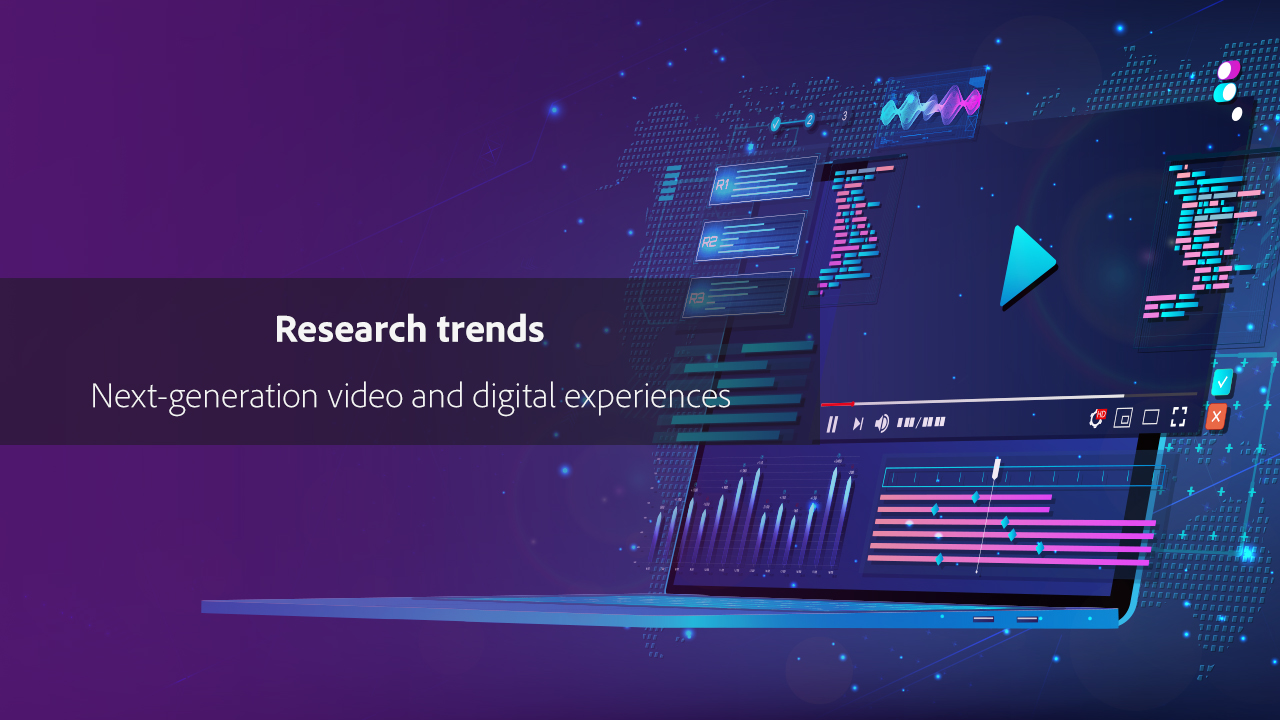
Wondering which trends and ideas will shape technology in 2022 and beyond? We talked to a few members of the Adobe Research team to find out.
Vishy Swaminathan, a Senior Principal Scientist at Adobe Research, works on next-generation video and digital experiences. He gave us an insider’s view on the ways video consumption is changing, and how video creation will change to keep up.
What are the most exciting trends in video right now?
For a long time, the video community was looking for parity with imaging in terms of cool artificial intelligence and machine learning algorithms. But I believe we can go beyond that now and move toward leveraging the unique properties of video.
Video is an inherently time-based media—it’s multi-modal with audio and video, and I see movement toward using things like motion, continuity in frames, and optical flow rather than simply applying the AI and ML we already have for still images to a sequence of frames. It’s been harder to jump into this straight away because video is very compute-hungry, but I think that’s where research in this space is going.
I’m also interested in larger trends about how people are consuming video. I tell people that even though I’ve been working in video for a long time, I still like to read for information. But my kids are quite the opposite. They’d rather watch a 30-second video—and it’s not just the kids. Everyone’s attention spans are changing, and video is filling that space really well by conveying things much more effectively in a much shorter time. So I think how people are consuming videos will start playing a much bigger role in how we create videos.
For example, there are already lots of techniques that researchers have been working on in Adobe (and outside of Adobe) for taking existing videos and creating smaller snippets for the bite-sized video consumption that is much more popular now. I think we’ll begin to look more deeply at consumption data to figure out what makes popular videos tick, what resonates with people, and how they’re consuming it.
Also, behavioral video consumption data shows us that people aren’t necessarily consuming videos linearly or watching them at the intended playback speeds. With these kinds of data, we can get the snippets tuned right for each audience and channel—what works for TV doesn’t necessarily work for Facebook or TikTok. We’re at the point where we can loop behavioral data back into how we produce snippets, and we can begin to do it as automatically as possible. We won’t replace creators, but we’ll be able to reduce the drudgery because the technology will understand the intent of the creator and use the data to make videos that are more effective.

What else do you think people will be talking about in papers and at conferences in 2022?
Auto generation of videos is already gaining ground and we will continue to see this trend. I think from an industry point of view, auto creation of variants of a given video will continue to get closer to reality. On the flip side, I think we’ll be talking a lot more about the misinformation associated with content.
There are lots of arguments about what is and isn’t authentic, but we can agree to look at what a person intended to convey, and figure out if that has been modified. The Content Authenticity Initiative is making great strides in this direction and I am proud to be associated with that effort. I would encourage the research community in general to help determine video alterations automatically or provide the right tools for people to figure it out.
What do you predict about the world of video a decade from now?
Of course, it’s hard to exactly predict what will happen in 10 years, but I think there will be big changes in how we consume content. Right now we’re still talking about the difference between books and videos. But, to some extent, one can argue that neither of these consumption modalities are natural. Immersive media, on the other hand, is starting to provide the opportunity for people to become totally immersed in what they consume. I think in 10 years or so, interaction—and how immersive content is—will fundamentally change. We’ll be producing content that totally immerses the user rather than having it be external to the experience of the user.
Want to know about the latest breakthroughs in computer vision, imaging, and video at Adobe Research? You can find out more here.